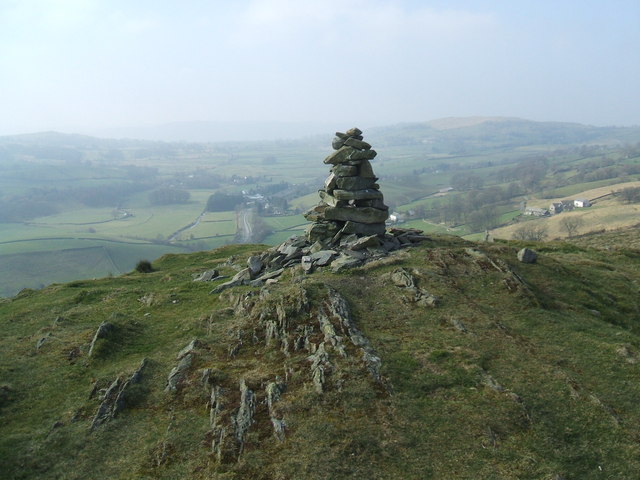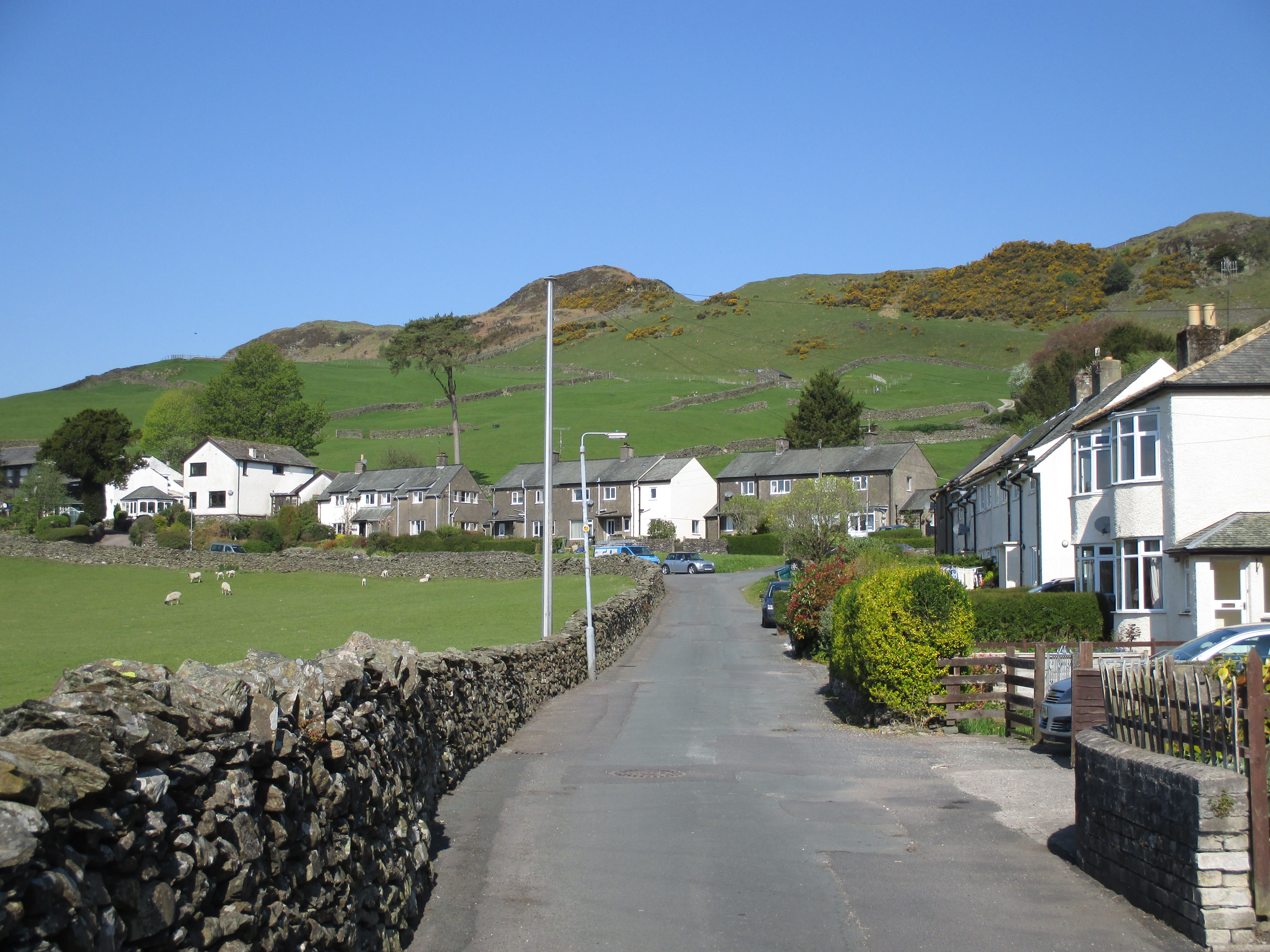|
Reston Scar
Reston Scar is a fell in the Lake District of Cumbria, England. It overlooks the north side of Staveley village, and is listed among Alfred Wainwright's " Outlying Fells of Lakeland" guide. The summit offers good views of the Coniston Fells, the Sca Fells and the Langdale Pikes. The main footpath up to the summit from Staveley passes to the south of Kemp Tarn, the largest of several ponds on the Scar. The summit is at and has a cairn. In his book ''The Outlying Fells of Lakeland ''The Outlying Fells of Lakeland'' is a 1974 book written by Alfred Wainwright dealing with hills in and around the Lake District of England. It differs from Wainwright's '' Pictorial Guides'' in that each of its 56 chapters describes a walk, ...'', Wainwright describes the ascent of Reston Scar from Staveley and calls the fell "a fine place for a siesta on a sunny day". References {{Outlying Fells Fells of the Lake District South Lakeland District ... [...More Info...] [...Related Items...] OR: [Wikipedia] [Google] [Baidu] |
The Outlying Fells Of Lakeland
''The Outlying Fells of Lakeland'' is a 1974 book written by Alfred Wainwright dealing with hills in and around the Lake District of England. It differs from Wainwright's '' Pictorial Guides'' in that each of its 56 chapters describes a walk, sometimes taking in several summits, rather than a single fell. This has caused some confusion on the part of authors attempting to prepare a definitive list of peaks. The Outlying Fells do not form part of the 214 hills generally accepted as making up the Wainwrights, but they are included in Category 2B of the ''Hill Walkers' Register'' maintained by the Long Distance Walkers Association. The book The first edition was published in 1974 by ''The Westmorland Gazette''. It was republished by Michael Joseph in 1992 () and a second edition, revised by Chris Jesty, was published by the Wainwright Society in 2020 (). The first edition is uniform with the seven volumes of Wainwright's ''Pictorial Guides'', with a yellow band at head and fo ... [...More Info...] [...Related Items...] OR: [Wikipedia] [Google] [Baidu] |
Cumbria
Cumbria ( ) is a ceremonial and non-metropolitan county in North West England, bordering Scotland. The county and Cumbria County Council, its local government, came into existence in 1974 after the passage of the Local Government Act 1972. Cumbria's county town is Carlisle, in the north of the county. Other major settlements include Barrow-in-Furness, Kendal, Whitehaven and Workington. The administrative county of Cumbria consists of six districts ( Allerdale, Barrow-in-Furness, Carlisle, Copeland, Eden and South Lakeland) and, in 2019, had a population of 500,012. Cumbria is one of the most sparsely populated counties in England, with 73.4 people per km2 (190/sq mi). On 1 April 2023, the administrative county of Cumbria will be abolished and replaced with two new unitary authorities: Westmorland and Furness (Barrow-in-Furness, Eden, South Lakeland) and Cumberland ( Allerdale, Carlisle, Copeland). Cumbria is the third largest ceremonial county in England by area. It i ... [...More Info...] [...Related Items...] OR: [Wikipedia] [Google] [Baidu] |
England
England is a country that is part of the United Kingdom. It shares land borders with Wales to its west and Scotland to its north. The Irish Sea lies northwest and the Celtic Sea to the southwest. It is separated from continental Europe by the North Sea to the east and the English Channel to the south. The country covers five-eighths of the island of Great Britain, which lies in the North Atlantic, and includes over 100 smaller islands, such as the Isles of Scilly and the Isle of Wight. The area now called England was first inhabited by modern humans during the Upper Paleolithic period, but takes its name from the Angles, a Germanic tribe deriving its name from the Anglia peninsula, who settled during the 5th and 6th centuries. England became a unified state in the 10th century and has had a significant cultural and legal impact on the wider world since the Age of Discovery, which began during the 15th century. The English language, the Anglican Church, and Engli ... [...More Info...] [...Related Items...] OR: [Wikipedia] [Google] [Baidu] |
Lake District
The Lake District, also known as the Lakes or Lakeland, is a mountainous region in North West England. A popular holiday destination, it is famous for its lakes, forests, and mountains (or ''fells''), and its associations with William Wordsworth and other Lake Poets and also with Beatrix Potter and John Ruskin. The Lake District National Park was established in 1951 and covers an area of . It was designated a UNESCO World Heritage Site in 2017. The Lake District is today completely within Cumbria, a county and administrative unit created in 1974 by the Local Government Act 1972. However, it was historically divided between three English counties ( Cumberland, Westmorland and Lancashire), sometimes referred to as the Lakes Counties. The three counties met at the Three Shire Stone on Wrynose Pass in the southern fells west of Ambleside. All the land in England higher than above sea level lies within the National Park, including Scafell Pike, the highest mountain in England. ... [...More Info...] [...Related Items...] OR: [Wikipedia] [Google] [Baidu] |
Fell
A fell (from Old Norse ''fell'', ''fjall'', "mountain"Falk and Torp (2006:161).) is a high and barren landscape feature, such as a mountain or Moorland, moor-covered hill. The term is most often employed in Fennoscandia, Iceland, the Isle of Man, parts of northern England, and Scotland. Etymology The English word "fell" comes from Old Norse ''fell'' and ''fjall'' (both forms existed). It is cognate with Danish language, Danish ''fjeld'', Faroese language, Faroese ''fjall'' and ''fjøll'', Icelandic language, Icelandic ''fjall'' and ''fell'', Norwegian language, Norwegian ''fjell'' with Norwegian dialects, dialects ''fjøll'', ''fjødd'', ''fjedd'', ''fjedl'', ''fjill'', ''fil(l)'', and ''fel'', and Swedish language, Swedish ''fjäll'', all referring to mountains rising above the Tree line, alpine tree line.Bjorvand and Lindeman (2007:270–271). British Isles In northern England, especially in the Lake District and in the Pennines, Pennine Dale (origin), Dales, the ... [...More Info...] [...Related Items...] OR: [Wikipedia] [Google] [Baidu] |
Staveley, Cumbria
Staveley () is a village in the South Lakeland district, in Cumbria, England. Historic counties of England, Historically part of Westmorland, it is situated northwest of Kendal where the River Kent is joined by its tributary the River Gowan, Cumbria, Gowan. It is also known as Staveley-in-Westmorland and Staveley-in-Kendal to distinguish it from Staveley-in-Cartmel (a small village near Newby Bridge which is now in Cumbria but was previously in Lancashire). There are three civil parishes – Nether Staveley, Over Staveley and Hugill (part). Their total population at the 2011 Census was 1,593 but this includes those living in the hamlet of Ings, Cumbria, Ings in Hugill parish. Governance Historic counties of England, Historically within the county of Westmorland, it became part of the new non-metropolitan county of Cumbria in 1974. Staveley is divided between three civil parishes; * The village south of the rivers Gowan and Kent is in Nether Staveley, * Most of the village nor ... [...More Info...] [...Related Items...] OR: [Wikipedia] [Google] [Baidu] |
Alfred Wainwright
Alfred Wainwright MBE (17 January 1907 – 20 January 1991), who preferred to be known as A. Wainwright or A.W., was a British fellwalker, guidebook author and illustrator. His seven-volume ''Pictorial Guide to the Lakeland Fells'', published between 1955 and 1966 and consisting entirely of reproductions of his manuscript, has become the standard reference work to 214 of the fells of the English Lake District. Among his 40-odd other books is the first guide to the Coast to Coast Walk, a 182-mile long-distance footpath devised by Wainwright which remains popular today. Life Alfred Wainwright was born in Blackburn, Lancashire, into a family which was relatively poor, mostly because of his stonemason father's alcoholism. He did very well at school (first in nearly every subject) although he left at the age of 13. While most of his classmates were obliged to find employment in the local mills, Wainwright started work as an office boy in Blackburn Borough Engineer's Department. He ... [...More Info...] [...Related Items...] OR: [Wikipedia] [Google] [Baidu] |
Cairn On Reston Scar - Geograph
A cairn is a man-made pile (or stack) of stones raised for a purpose, usually as a marker or as a burial mound. The word ''cairn'' comes from the gd, càrn (plural ). Cairns have been and are used for a broad variety of purposes. In prehistoric times, they were raised as markers, as memorials and as burial monuments (some of which contained chambers). In modern times, cairns are often raised as landmarks, especially to mark the summits of mountains. Cairns are also used as trail markers. They vary in size from small stone markers to entire artificial hills, and in complexity from loose conical rock piles to elaborate megalithic structures. Cairns may be painted or otherwise decorated, whether for increased visibility or for religious reasons. A variant is the inuksuk (plural inuksuit), used by the Inuit and other peoples of the Arctic region of North America. History Europe The building of cairns for various purposes goes back into prehistory in Eurasia, ranging in s ... [...More Info...] [...Related Items...] OR: [Wikipedia] [Google] [Baidu] |
Fells Of The Lake District
A fell (from Old Norse ''fell'', ''fjall'', "mountain"Falk and Torp (2006:161).) is a high and barren landscape feature, such as a mountain or moor-covered hill. The term is most often employed in Fennoscandia, Iceland, the Isle of Man, parts of northern England, and Scotland. Etymology The English word "fell" comes from Old Norse ''fell'' and ''fjall'' (both forms existed). It is cognate with Danish ''fjeld'', Faroese ''fjall'' and ''fjøll'', Icelandic ''fjall'' and ''fell'', Norwegian ''fjell'' with dialects ''fjøll'', ''fjødd'', ''fjedd'', ''fjedl'', ''fjill'', ''fil(l)'', and ''fel'', and Swedish ''fjäll'', all referring to mountains rising above the alpine tree line.Bjorvand and Lindeman (2007:270–271). British Isles In northern England, especially in the Lake District and in the Pennine Dales, the word "fell" originally referred to an area of uncultivated high ground used as common grazing usually on common land and above the timberline. Today, gen ... [...More Info...] [...Related Items...] OR: [Wikipedia] [Google] [Baidu] |






